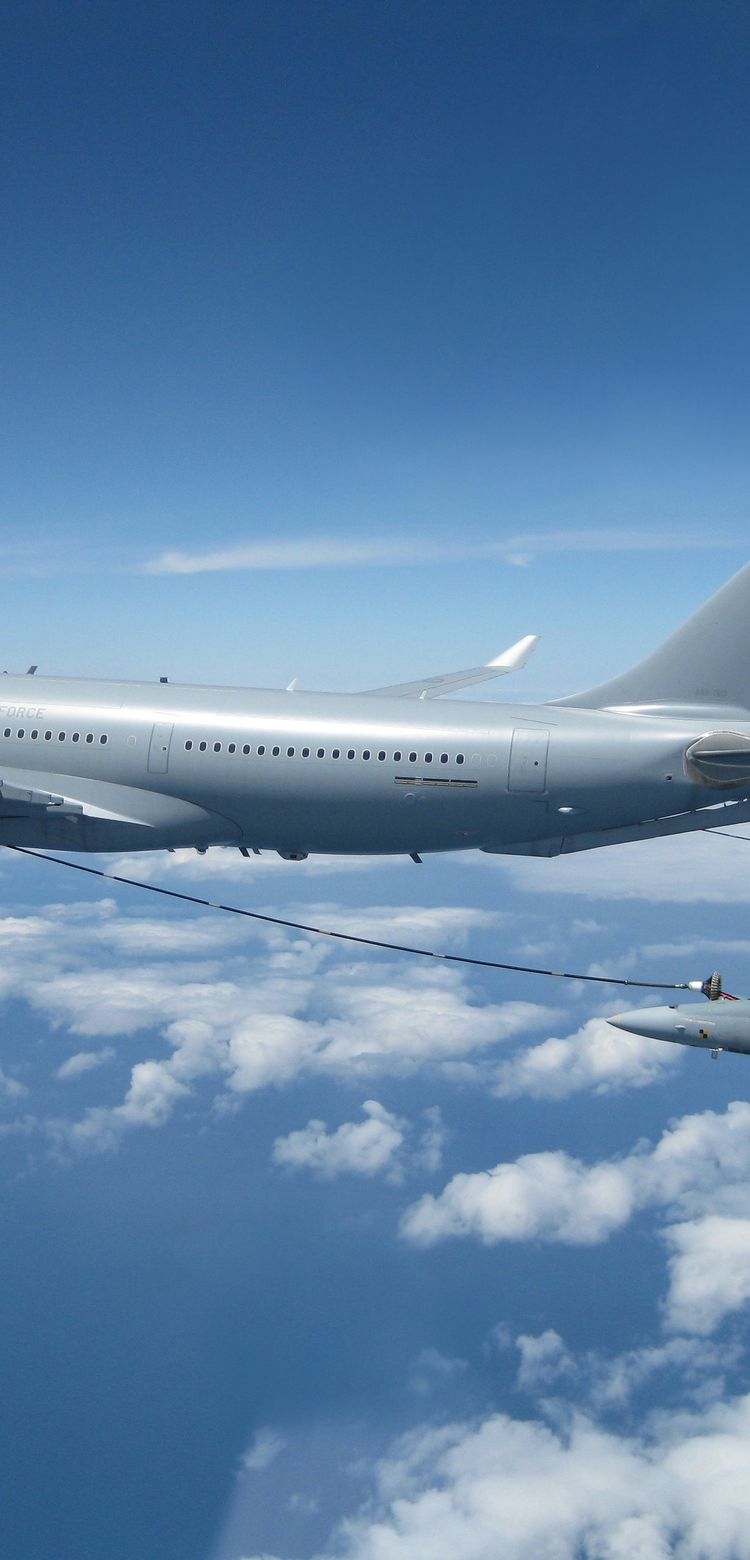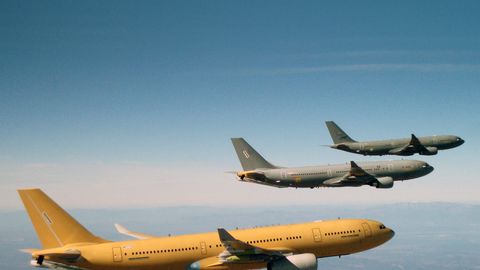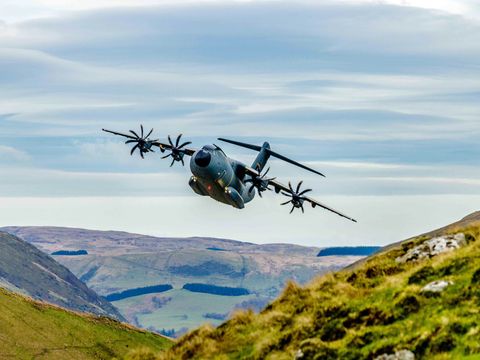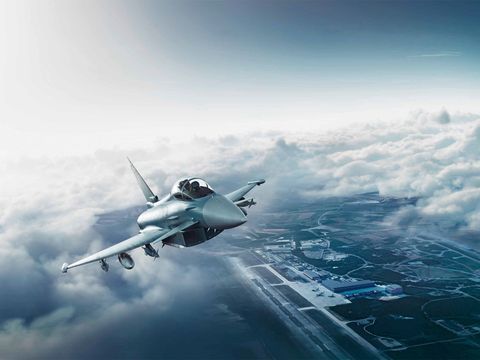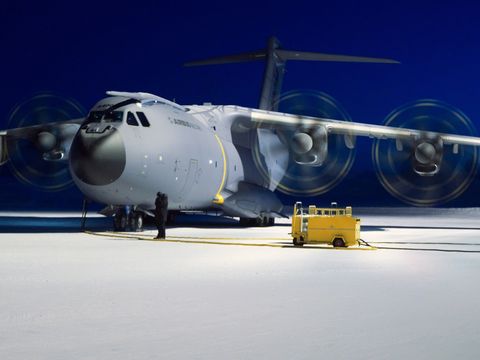Mission enabler
A330 MRTT Overview
The Airbus A330 Multi Role Tanker Transport (MRTT) is the new generation strategic tanker aircraft of choice for the world's leading air forces. The A330 MRTT is the most capable and combat-proven tanker available today, providing unmatched flexibility in air-to-air refuelling (AAR), VIP, personnel and cargo transport, and aeromedical evacuation (MedEvac) missions.
Based on the highly successful A330 widebody airliner, the A330 MRTT Family includes the A330 MRTT+ based on the A330neo, the newest version of the A330.
New generation and combat proven tanker
The A330 MRTT is the perfect replacement for older strategic tankers with increased range, payload and fuel offload capabilities for unmatched mission flexibility and versatility.
The tankers of choice: Chosen by 18 nations including Australia, Canada, France, NATO - Multinational MRTT Fleet (Germany, Netherlands, Luxemburg, Norway, Belgium, Czech Republic, Denmark, Sweden), South Korea, Singapore, Saudi Arabia, Spain, Thailand, United Arab Emirates and the United Kingdom.
Since its entry into service several customers have repeated orders among them Australia, France, NATO - Multinational MRTT Fleet, Saudi Arabia and United Arab Emirates.


A330 MRTT+
The natural evolution of the MRTT
The A330 MRTT+ represents the natural evolution in the successful A330 MRTT programme, leveraging on more than 14 years of expertise and proven capabilities.
Enhanced aerodynamics
Optimized wing aerodynamics, featuring a longer wingspan and a new blended wingtip device. Reduced fuel burn and longer range.
Latest generation propulsion system
The A330 MRTT+ is powered by the Rolls Royce Trent 7000 engines. Lower fuel burn, lower CO2 and NOx emissions, less noise.
Improved cabin experience
The A330 MRTT+ benefits from the A330neo’s upgraded cabin design, including more overhead stowage, and a more comfortable and quiet cabin.
New Weight Variant
The Maximum Take-off Weight (MTOW) of the A330 MRTT+ is increased to 242 tonnes, delivering longer range and greater flexibility to operators.
Multi role capability
The best all-in-one solution with unmatched flexibility and versatility to support a wide range of missions:
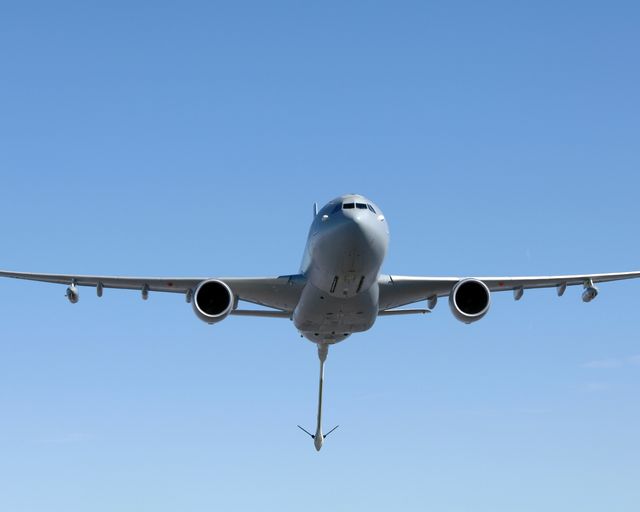

Air to Air Refuelling
Equipped with state-of-the-art operational and proven enhanced vision system, AAR refuelling boom and AAR under-wing pod systems:
- AAR boom fuel flow rate up to a maximum of 3,600 kg/min – 1,200 US gal/min
- Under wing PODS fuel offload rate 1,300 kg/min – 420 US gal/min-
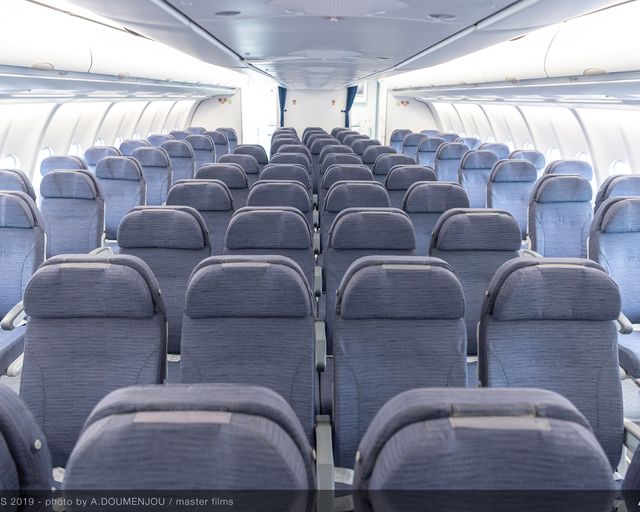

Air transport of personnel
The ability to transport large numbers of troops and cargo with the speed, range and comfort of an airliner. Versatile interior configurations ranging from seating up to 300 passengers to complex VIP customisations.
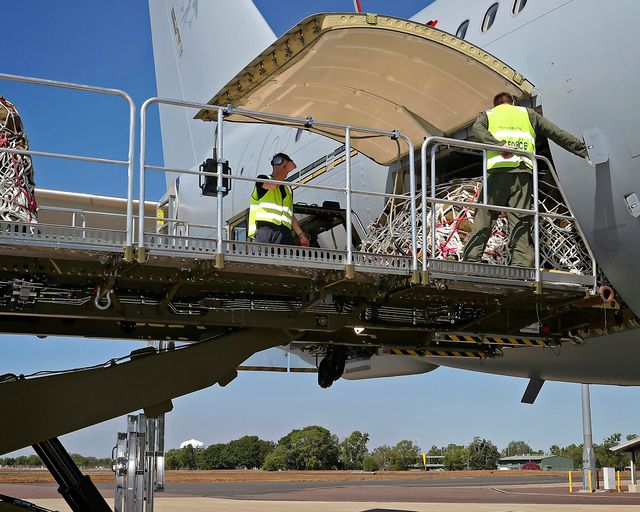

Cargo transport
Cargo is conveniently stored in the lower hold in a variety of handling options, including military NATO pallets, civilian unit load devices and pallets.
The A330 MRTT has two lower deck cargo compartments (forward and aft) and a rear bulk area.
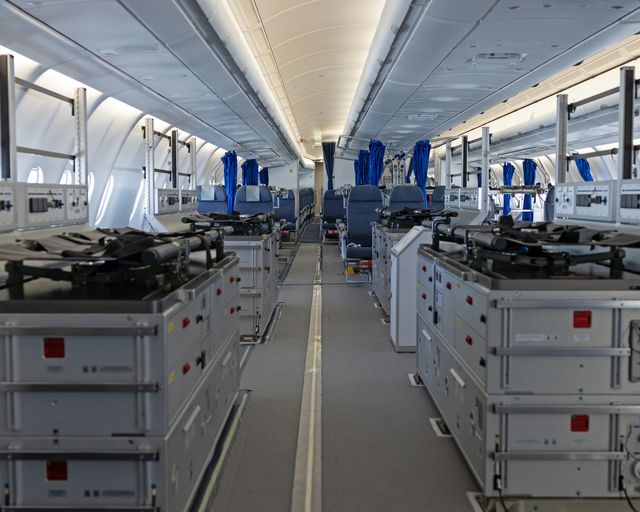

Aeromedical evacuation
During relief operations, medical care can be provided simultaneously with the transport of troops and cargo. Flexible MedEvac cabin arrangements with layouts for up to 40 stretchers, 20 medical staff seats and 100 passengers.


Combat proven
The tanker of choice with over:
- More than 340.000 flight hours
- More than 310.000 AAR contacts
Combat proven since 2014 and fully interoperable with a wide range of receivers including variants:
- Boom : E3, F-16, F-15, C-17, F-35A, E-7A, A-10C, F-22, P-8A, B1-B, B-2A, B-52H.
- Hose and drogue: F-18, Tornado, Rafale, M2000, F-35B, Eurofighter Typhoon, AV-8B, JAS 39, etc.
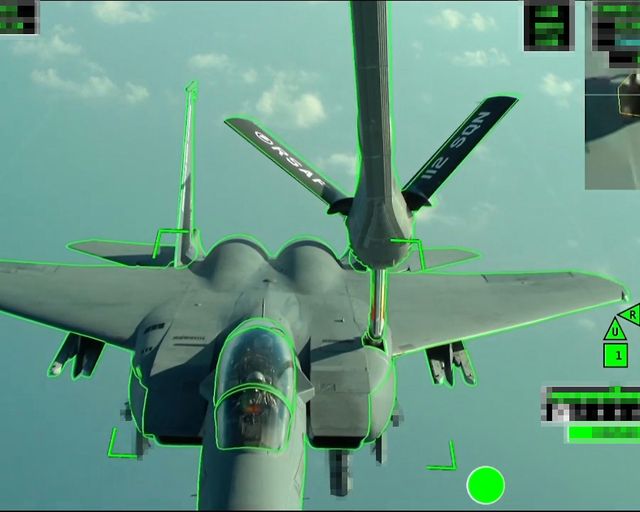

Pioneering spirit, leadership in innovation and new developments
Automatic AAR (A3R)
The first tanker in the world with boom A3R capability. Certified and proven in service since 2022. A3R reduces workload, improves safety and optimises AAR operations.
Enhanced connectivity and more
Leveraging on Airbus experience and capabilities in multi-domain operations, the A330 MRTT offers scalable solutions to turn it into a battlefield communications, surveillance, C2 and intelligence node, while enhancing the aircraft’s survivability for any mission.
Video Gallery
-
 A330 MRTT - The most capable new-generation tanker and transport aircraft
A330 MRTT - The most capable new-generation tanker and transport aircraft
A330 MRTT - The most capable new-generation tanker and transport aircraft
-
 A330 MRTT+
A330 MRTT+
A330 MRTT+
-
 A330 MRTT Automatic Air-to-Air Refuelling (Night Ops)
A330 MRTT Automatic Air-to-Air Refuelling (Night Ops)
A330 MRTT Automatic Air-to-Air Refuelling (Night Ops)
The latest A330 MRTT news
In the spotlight
-

Royal Thai Air Force orders next generation Airbus A330 MRTT+
Press Release
Defence
The Royal Thai Air Force (RTAF) has ordered an Airbus A330 Multi Role Tanker Transport Plus (MRTT+). -
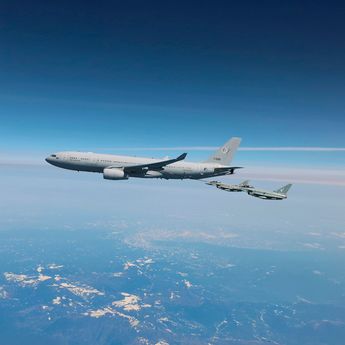
NATO orders two additional Airbus A330 MRTT aircraft and welcomes Sweden and Denmark…
Press Release
Defence
-

How the Airbus A330 MRTT helps provide security and deliver aid
Web Story
Defence
-

First Airbus A330 MRTT for the Spanish Air and Space Force enters into service
Press Release
Defence
-

Airbus signs new study contract to define France's future maritime patrol aircraft
Press Release
Defence
The A330 MRTT around the world
Image gallery
